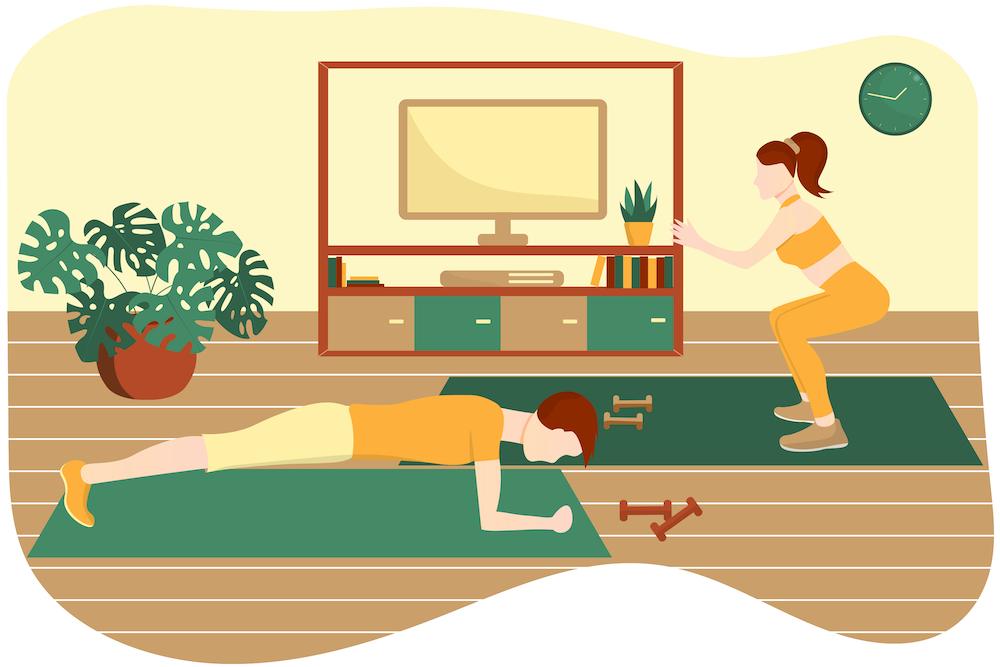Mental Health Tops Weight Loss as Basis for Workout

With 71 percent considering themselves active, Baby Boomers outpace Generation X, Millennials and Gen Z, challenging the idea that fitness spaces are ruled by the young.
American consumers who consider themselves active have multifaceted motivations for spending time and money on fitness, including mental health and feeling good, and they are increasingly using digital and at-home exercise options, according to The Next Fitness Consumer, a new survey report from ABC Fitness Solutions and the IHRSA Foundation, a consulting firm and the charity arm of a fitness industry group, respectively.
However, there is a silver lining for fitness location owners, battered by the COVID-19 pandemic: In-person gym and studio usage is down only by single digits compared to pre-pandemic levels (8 and 5 percent, respectively). Most people who are not now gym members were not even before the pandemic. Also, among those who quit gyms, 49 percent say they want to return, probably because gyms have workout methods that consumers desire.
Overall, fitness-minded consumers have become more flexible in how they work out, in a way that doesn’t exclude gyms from their purview — as some feared when memberships were canceled and Pelotons orders stacked up into a backlog — but there is a new paradigm to navigate.
“Going forward, working out from home is matter of optionality rather than exclusivity,” Cristine Kao, chief marketing officer of ABC Fitness, told Athletech News.
The study was based on surveys, conducted in June, from 2,113 consumers, 18 and older, who considered themselves “active.” The term encompasses a wide variety of habits, behaviors and commitments. Among this group, 66 percent said they currently work out and 25 expressed a desire to. Nine percent were not doing anything for physical health, and did not have an active desire to, but for some reason considered themselves active. The study authors lumped them all together as the “new active consumer” regardless. Their self-identification of being “active” is a reason to think the fitness industry can reach them.
“Being active” ranked as the most common goal for these consumers, with 46 percent of respondents saying it was important to them. Mental health ranked second, with 35 percent, surpassing weight loss (32 percent). Other motivators included improving mental acuity, feeling good, a sense of accomplishment, and improved physical appearance. This shows a mixed, “holistic” approach to working out, said Kao, that goes beyond out clichés about wanting beach bodies and six-pack abs.
Relative to the time before COVID-19, active consumers increased usage of free online workouts by 15 percent, at-home fitness equipment by 13 percent, and other digital exercise programs by eight percent and use of at-home workout options exceeded that of health clubs and fitness studios. Outdoor exercise also increased by seven percent. Women were slightly more likely to use digital options and men more likely to continue to go to in-door facilities for a workout, according to the survey.
About a third (34 percent) of “active” consumers are members of gyms. Fifty-five have never been members. Among past members, 40 percent quit within the last year and 44 percent say fear the pandemic is not under control is their reason for not rejoining.
The survey asked what exercise modalities active consumers preferred. The top five were cardio equipment training, flexibility/stretching, free-weight training, equipment-based exercise classes and health/wellness coaching. Four of these options are available at gyms and difficult, though not impossible, to do at home, a sign that gyms still offer what consumers want, said Kao.
“Gyms can still be the hubs for exercise,” she said. However, the increased use of at-home options means they should consider a “hybrid model” (which may have implemented since the pandemic) in which accesses to digital fitness classes and programs are part of a membership package.
“People are expecting increasingly personalized options for their fitness routines,” said Kao.
The survey that shows mental health has surpassed weight loss as reason for working out also came across some interest age demographics. Fifty-nine percent of members of Generation Z (aged 18 to 24) surveyed consider themselves “active.” About two third (63 and 64, respectively) of millennials and Generation X consider themselves active. Combined, they make up the age range of 25 to 55. The age group most likely to tag themselves as active are Baby Boomers, people 56 and older, at 71 percent. This counters the notion that gyms and fitness spaces are young people’s domains.
Also, wealth seems tied to one’s likeliness to be active; Americans from household incomes of at least $150,000 a year are more likely to be active than those from households with an income of less than $50,000 (78 percent vs. 59 percent). Full-time employees and retirees have higher rates of physical activity at 71 and 76 percent, respectively. Unemployed and disabled workers have the lowest rates at 53 and 44 percent.
Nick Keppler is a freelance journalist, writer and editor. He enjoys writing the difficult stories, the ones that make him pore over studies, talk about subjects that make people uncomfortable, and explain concepts that have taken years to develop. Nick has written extensively about psychology, healthcare, and public policy for national publications and for those locally- based in Pittsburgh. In addition to Athletech News, Nick has written for The Washington Post, The Daily Beast, Vice, Slate, Reuters, CityLab, Men’s Health, The Gizmodo Media Group, The Financial Times, Mental Floss, The Village Voice and AlterNet. His journalistic heroes include Jon Ronson, Jon Krakauer and Norah Vincent.



